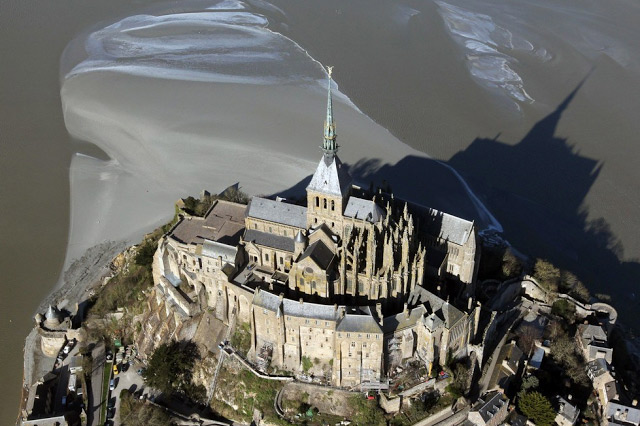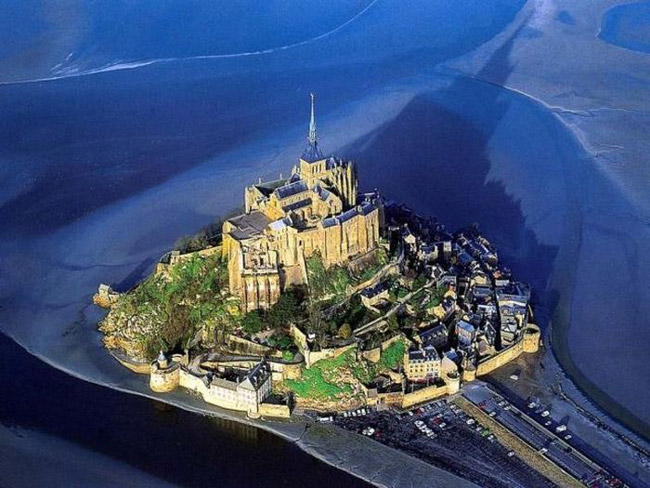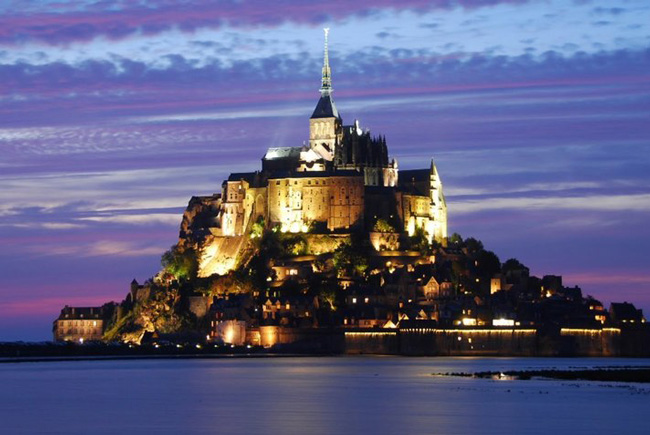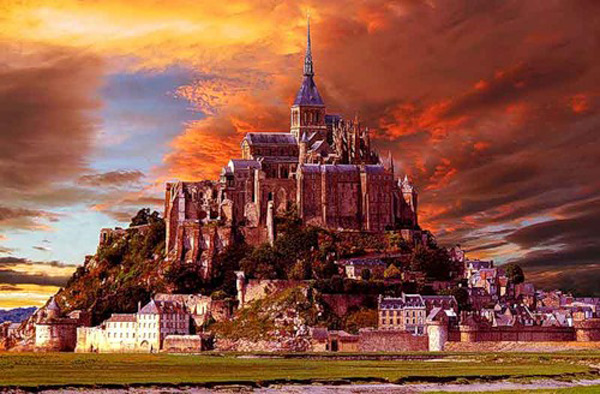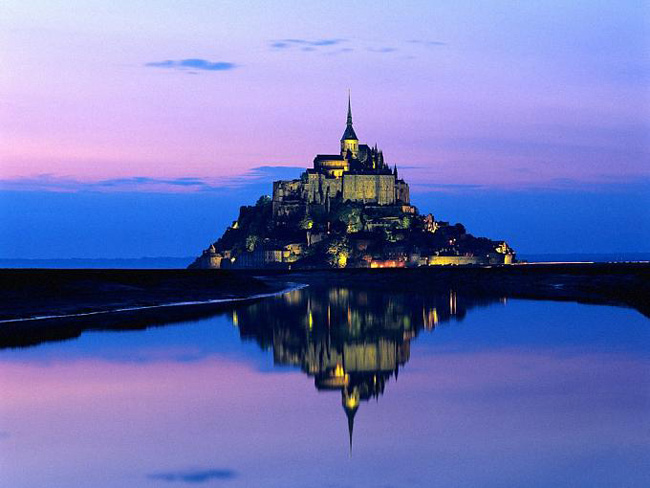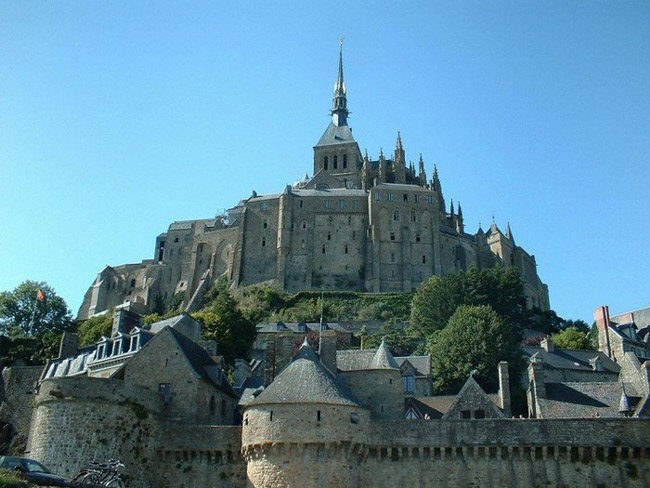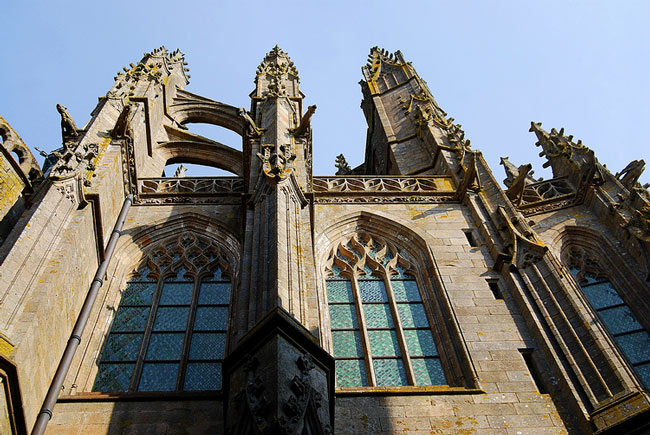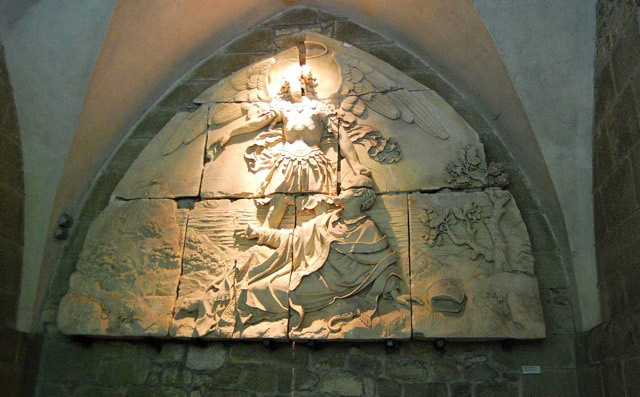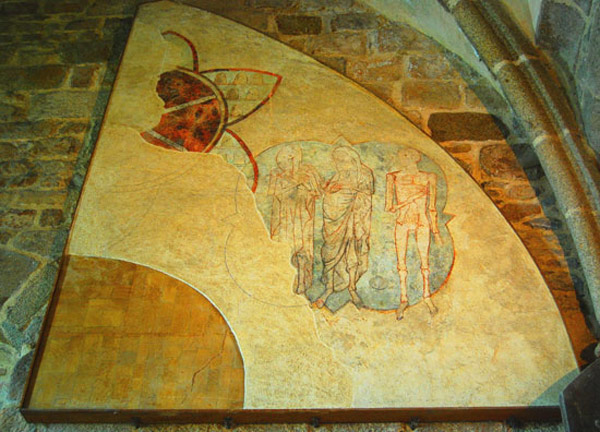The French Organization for Science, Education and Culture recognized France’s Mont Saint Michel Island as a World Cultural Heritage in 1979.
Mont Saint Michel Island is an island with a unique and extremely mysterious combination of architectural works combined with nature. This is also the smallest island in France, also known as the rocky island.
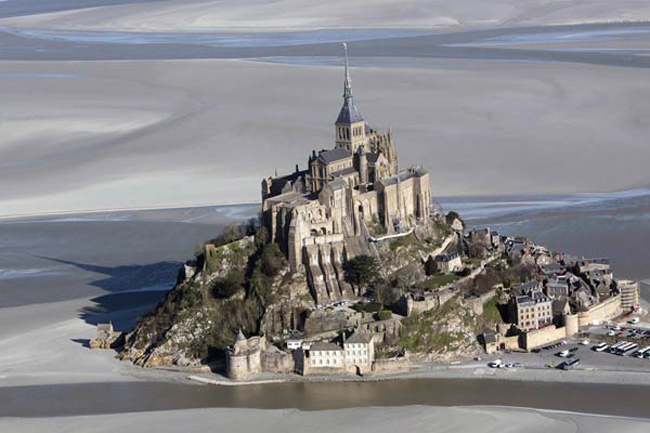
Mont Saint Michel Island is located in the Normandy region of France, more than 350 km from Paris and only 1 km from the southwest coast of the country. Because the area is very small, there are only less than 50 residents on the island, but up to 3 million visitors come here every year. That number partly speaks to the great attraction of this small island.
In the 8th century AD, this place was once an important fortress of France and also the main church of Saint Michel citadel . For that reason, the new island was named Saint Michel. In ancient times, this land was located on the mainland. Over millions of years, sea erosion has carved the soil and rocks into this unique island.
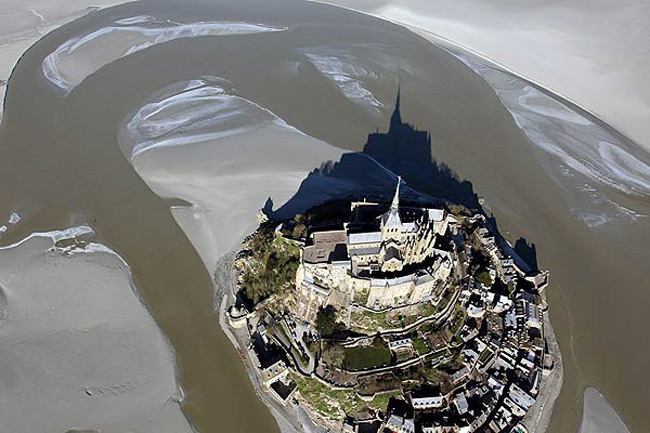
As expected, it is one of the top three tourist attractions in France, along with the Eiffel Tower and Versailles Castle. Mont Saint Michel Island is always mysterious and has a special appeal to visitors and tourists. On the island there is a monastery of the Benedictine order . The top of this monastery has a sharp tower pointing straight into the sky. The monastery’s grandeur and mysterious appearance like a fairy-tale castle made Hollywood filmmakers choose this place to film the movie The Lord of the Rings.
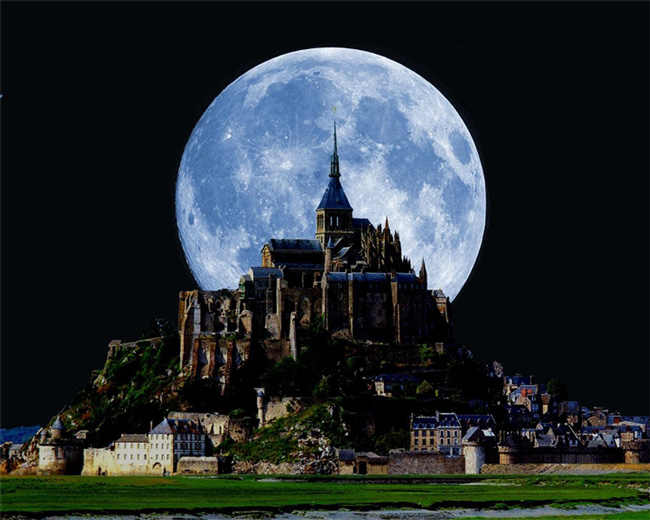
At night, Mont Saint Michel island has a mysterious and enchanting appearance. This is what has made Mont Saint Michel island increasingly famous, attracting not only visitors but also Hollywood filmmakers.
The mystery of the island and the monastery here exists right in the history of its formation. The story goes that long ago, bishop Saint Aubert d’Avranches , in one of his sleep, received orders from Saint-Michel three times to build a monastery on the island. In 708, Saint Aubert d’Avranches carried out this will and two years later, in 710, the work was completed. The island’s previous name was Mont-Tombe and was also renamed Mont-Saint-Michel from then on.
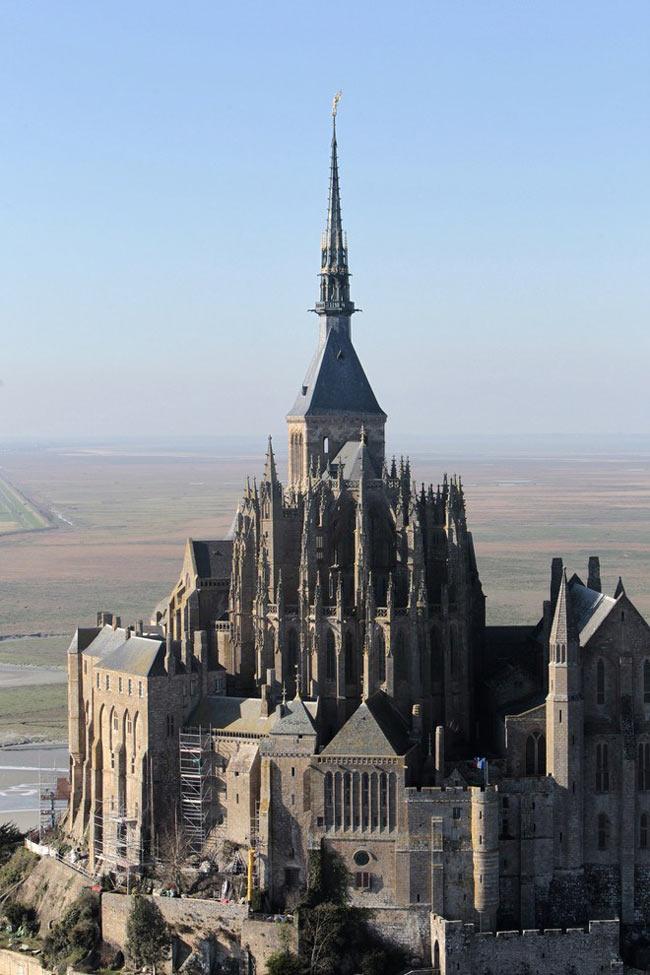 The peak of the Mont Saint Michel monastery with a sharp tip also contributes to the mysterious appearance of this architectural work
The peak of the Mont Saint Michel monastery with a sharp tip also contributes to the mysterious appearance of this architectural work
Before being shaped into what it is today, Mont-Saint-Michel has experienced many ups and downs of history. After a big fire in 922 burned down all the first religious buildings, including the Mont-Saint-Michel monastery. In 966, Duke of Normandy, Richard I, built a Benedictine monastery on the island. Many parts were reinforced and built, but in 1203, the Mont-Saint-Michel monastery was burned again. The French King at that time, Phillip Augustus, spent a large sum of his money to rebuild the church. In 1228, a new monastery was rebuilt in Gothic style with the basic architecture still preserved today.
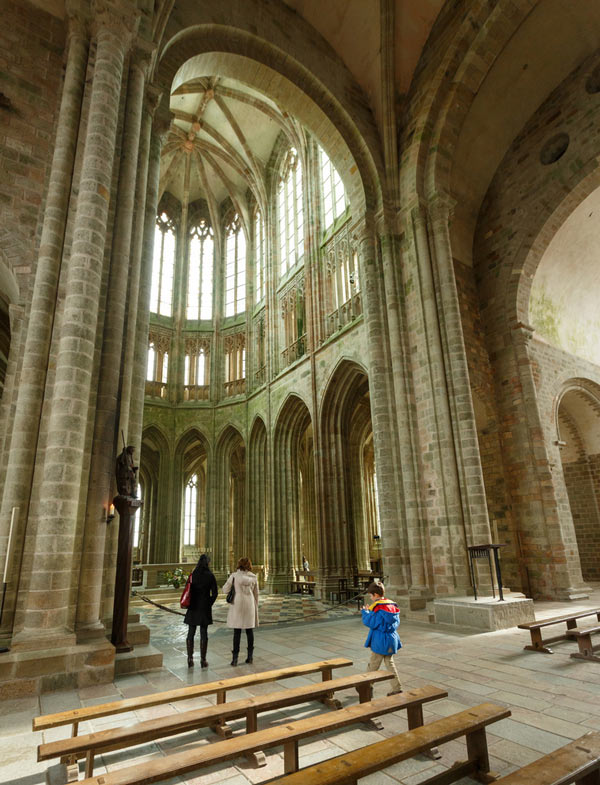
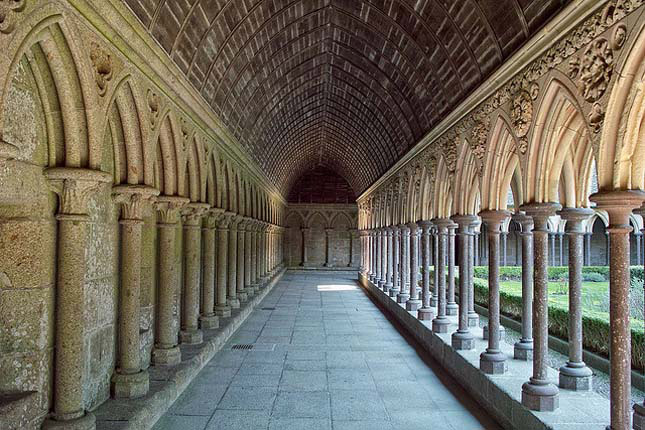
Previously, we had to carry water at low tide to get to the island, but in 1879, the government built a bridge connecting the mainland with the island.
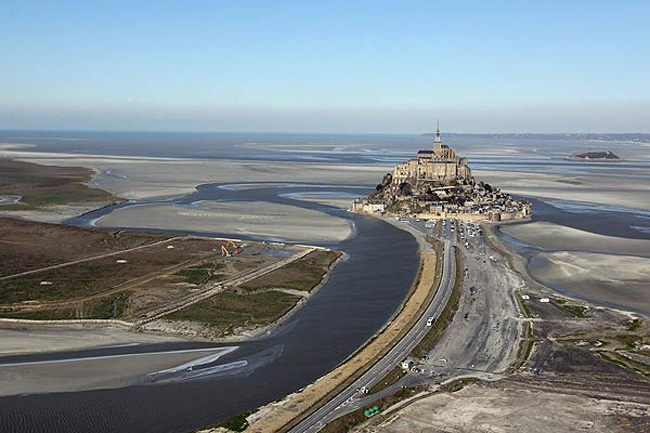
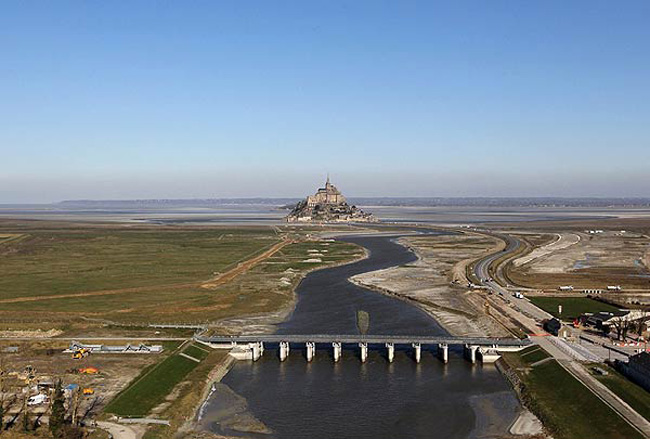
There is another feature that makes the rocky island of Mont-Saint-Michel unlike any other island in the world, which is that it always changes with the change of tides . There are few places in the world where tides change as quickly and strongly as they do here. There are about 53 days a year when the tide is at its peak, and the rise and fall of the tide happens very quickly in just a few hours. It is the change of tides that makes Mont-Saint-Michel sometimes look like a fortress on land, sometimes like a mysterious castle in the middle of the ocean. Perhaps it is also for this reason that Mont-Saint-Michel was once considered a fortress during the war between England and France. For a time after that war, Mont-Saint-Michel also became a prison for more than 100 years, from the end of the Renaissance to the French Revolution. When the French Revolution took place, Mont-Saint-Michel became a real prison. Many rooms in this monastery have been converted into factories with hundreds of hard laborers. Currently, Mont-Saint-Michel still retains vertical flow systems used to transport prisoners. The prisoners stood inside the big wheel and used their strength to turn the wheel, transporting prisoners from the bottom of the hill to the top. Under pressure from many writers, including Victor Hugo, Flaubert… Mont-Saint-Michel prison was abolished in 1863.
Looking from the outside, the island actually just looks like an architectural work with a large castle and a few small buildings around. All architecture on the island is Gothic style and is mostly built of stone , giving the island’s architecture a uniform look.
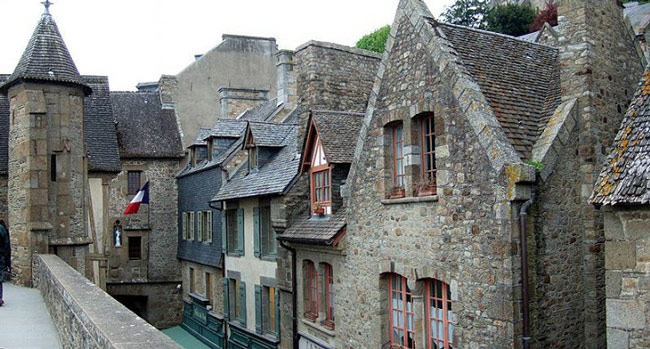
Previously, the island was connected to the mainland by a natural land bridge. Only at low tide does this bridge appear. Normally, if you want to go to the island, you have to go by boat. However, because the number of visitors to the island was increasing, in 1879 the government built a dike connecting the island to the mainland. Until now, after many centuries, this island has not lost its attraction but is becoming more and more famous around the world. Nearly 50 people live on the island today making a living from catering and tourism services. Restaurant services as well as other tourism services on the island are strictly controlled because the large number of tourists has become a threat to this heritage. Besides, because it is an island, every time the sea level rises, the corrosive waves greatly affect the architecture of the buildings here.
In 2009, Unesco placed this cultural heritage on the list of heritage sites in need of protection . Therefore, a dam was built across the river towards the island to prevent rising sea levels from flooding this small island.
The local government is planning to build an electric vehicle project to serve tourists visiting the island to minimize pollution to the environment as well as the general landscape of Mont-Saint-Michel.
